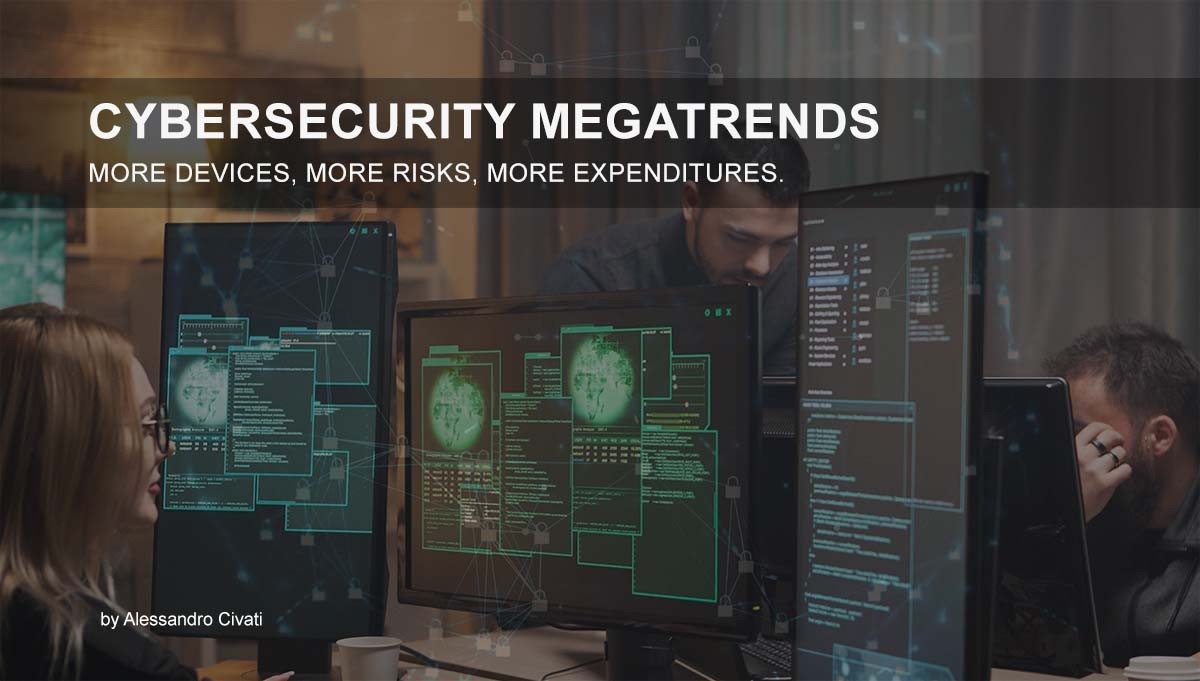Cybersecurity is a big concern for all types of organizations. Cybersecurity protects computers, servers, mobile phones, and electronic systems from malicious attacks, and its function can be summarized:
- Protecting the devices that people use.
- Protecting the information on these devices.
- Protecting the identity of the people who use this information.
The cybersecurity landscape has become riskier since the start of the COVID-19 pandemic. About 48% of organizations in Europe and the U.S. have reported experiencing a cyberattack. Implementing cyber-security effectively and correctly is one of the challenges of today’s world; the number of devices has increased, and hackers have become more creative.
A successful attack will affect the organization and similar businesses using compromised systems. A significant data breach may affect some technologies’ reputation, confidence, trust, and viability. These ramifications have been called ‘the haunting effect’ in some circles.
There are rising costs for the involved organizations that must spend money and time to ascertain if they are affected. The rising costs of a successful cyberattack go beyond hacks—Trojans and viruses into ransomware, phishing, and concerted campaigns against data repositories and supply chains. Despite doubling effort and spending on cybersecurity, organizations are still prone to attacks.
There are claims that the rising costs of goods and services can be attributed to cybersecurity breaches. Without cyber security, organizations cannot defend themselves against data breaches and hacking attacks and become a simple target for threat actors.
The most difficult challenge in cybersecurity is the ever-changing nature of security risks. Security risks are increasing due to the expansion of communications on a global scale and the use of cloud services to store sensitive and personal information.
I have identified megatrends that have made the cybersecurity landscape more complicated, riskier, and more expensive to manage.
The Digital Shift
The digital explosion and connectivity have occurred in both businesses and governments. Both infrastructure and related services have become more accessible compared to pre-COVID times. More internet accessibility has been a boon for attackers who have more opportunities to compromise remote users, defenses, and vulnerable systems. The COVID-19 pandemic compelled workers across all sectors to be digitally dependent. In some regions, there are mounting calls for 25% of jobs becoming remote in 2023 in the U.S. Expanding digital dependency has eroded the traditional corporate perimeter in the office setting. Employees are accessing corporate resources from their devices, using unsecured public Wi-Fi networks, and placing organizations at the risk of data breaches and cyberattacks.
Advent of Ecosystems
Organizations are increasingly adopting their infrastructure and resources to partners, manufacturers, and supply-chain suppliers. These ecosystems promote enhanced information sharing and make trade barriers less obtrusive. However, the ecosystems pose more significant cyber risks for businesses since they are more challenging to manage, secure, and regulate. The ecosystem is beyond the control of the company.
The Collision of Physical and Digital Worlds
The physical and digital worlds increasingly overlap, presenting a hybrid threat landscape that has implications for both worlds. Some consequences in the physical world include loss of confidential data, business disruption, diminished physical security, lack of infrastructure security, litigations, and loss of life. Cybersecurity is also taking on a political dimension. Beyond the well-known state actors like China, Iran, North Korea, and Russia, there has been a flurry of cyber-attacks sponsored by different countries after the outbreak of the war in Ukraine. Additionally, we can already witness the weaponization of operational technology in financial systems, power grids, fuel and gas pipelines, water supply systems, healthcare systems, and internet infrastructure to cause harm in different facets of human life.
The Emergence of New Technologies
A host of new technologies such as the multi-cloud, internet of things, edge computing, 5G technology, and artificial intelligence have created a humongous amount of entry points and hackable devices for attackers to exploit. On the other hand, attackers currently use advanced tools, such as artificial intelligence, machine learning, and automation to launch successful attacks. Attackers can expedite the end-to-end attack life cycle, from reconnaissance through exploitation in days rather than weeks. Some of the technologies and capabilities are making known forms of attacks more prevalent, such as ransomware and phishing. During the initial wave of COVID-19, the number of ransomware attacks in the world spiked by 148 percent, and phishing attacks increased by 510 percent. Overall, the potential for disruption becomes widespread as connectivity increases worldwide.
Complex Regulations
Governments and regulatory authorities have come under pressure to quell a massive surge in data breaches and cyberattacks. Numerous governments have enacted data protection laws and privacy regulations to stave off attacks. However, the new and complex rules are evolving so fast that businesses are not equipped to track and implement regulatory mandates within all countries or geographies they operate in. Non-compliance issues have exposed companies to operational failures, expensive fines and penalties, and loss of customer trust.
In conclusion, the risk profile consistently changes and calls for upstream and downstream stakeholders to stay abreast of changes and emerging threats. Many organizations lack sufficient cybersecurity talent, knowledge, and expertise—and the shortfall is growing. Cyber risk management has not kept pace with the proliferation of digital and analytics transformations, and many companies are unsure how to identify and manage digital risks.
Effective risk management calls for proactive visibility and context across the entire cyber-attack surface. Businesses must understand the vulnerabilities that can be exploited to cause the most significant harm. Incident response should be tested vigorously and frequently, thinking of both the hacker and the defender.
Author: Alessandro Civati
Blockchain ID: https://x88.life/KBSwc8LnYO


